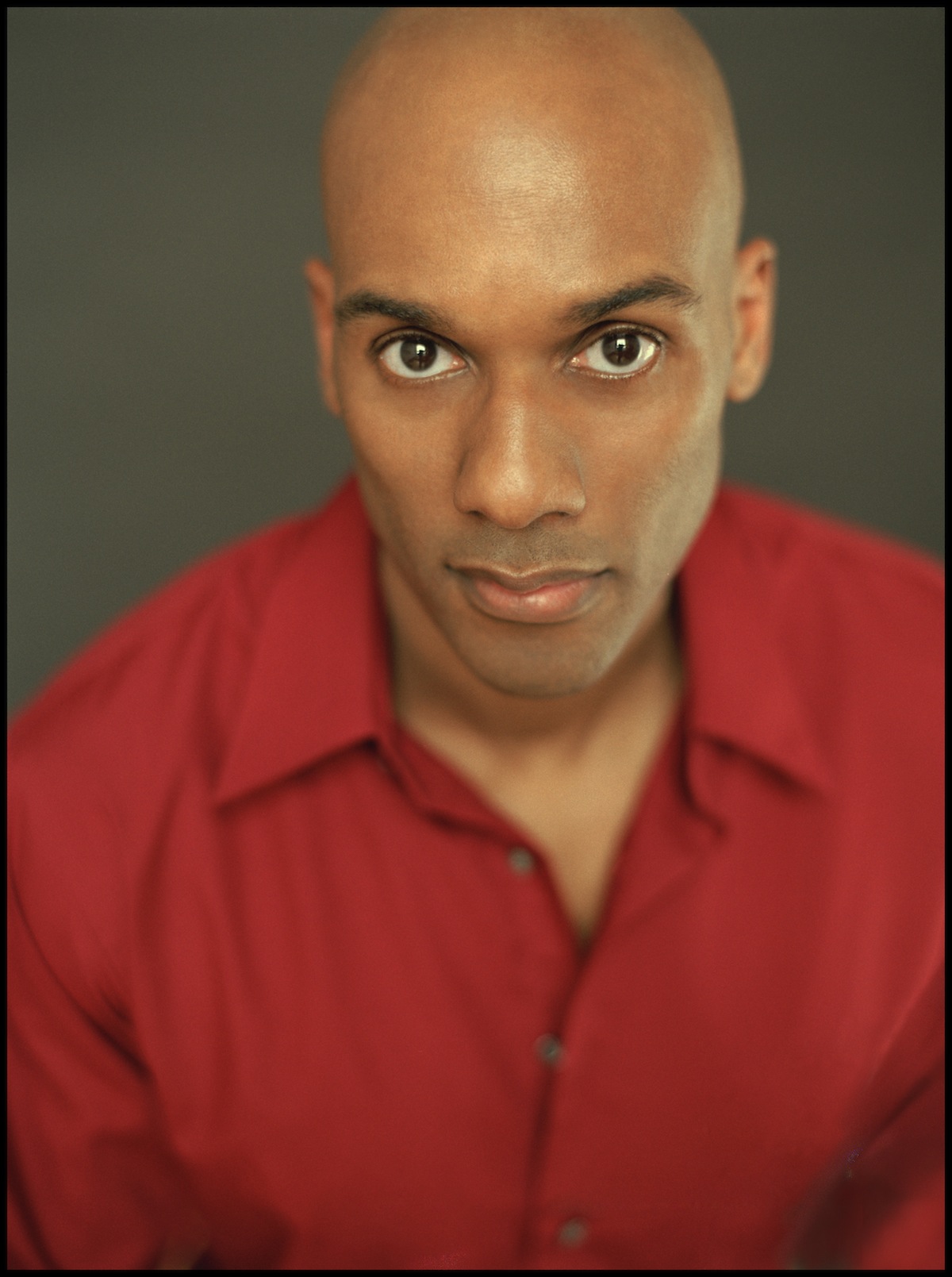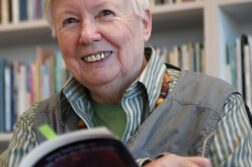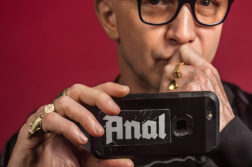AUTHOR-ACTIVIST Keith Boykin’s latest book, Beyond the Down Low, published early this year by Carroll & Graf, explores an underground subculture of men who engage in same-sex sexual activity in secret while projecting a heterosexual public image. Attempting to counteract some sensationalized reporting on this phenomenon—such as the notion that the down low is exclusively the province of African-American men—the book became a bestseller that refocused the debate on “the DL.”
In his first book, One More River to Cross: Black & Gay in America (1996), Boykin argued that blacks and gays have in common a struggle against oppression and negative stereotypes. This and other points of intersection between gay issues and black issues have found their way into many articles in places like The Advocat e and The Village Voice, and into his widely syndicated column in GLBT newspapers. Daily commentary can be found on his website at www.keithboykin.com.
e and The Village Voice, and into his widely syndicated column in GLBT newspapers. Daily commentary can be found on his website at www.keithboykin.com.
A graduate of Harvard Law School, where he was a leader in the campus diversity movement and editor of The Harvard Civil Rights–Civil Liberties Law Review, Boykin went on to take a position in the Clinton White House as special assistant to the President and director of specialty media. For a time the highest-ranking openly gay person in the White House, Boykin helped organize the nation’s first meeting between gay and lesbian leaders and a U.S. president. Residing in New York City, he now serves as board president of the National Black Justice Coalition.
A popular public speaker and national media commentator, Boykin was invited to be the featured speaker at this year’s annual dinner meeting of the Harvard Gay & Lesbian Caucus. Soon thereafter, the following exchange was conducted in real time on the Internet.
Gay & Lesbian Review: The phenomenon described in your new book, Beyond the Down Low, was almost unknown to the general public until a New York Times Magazine article ran a cover story [August 3, 2003] detailing an underground world of mostly black men who engage in sexual acts on the sly while living as straight men with wives or girlfriends on the surface. What was your response to this article?
Keith Boykin: Well, I didn’t like it. I felt it was oddly contradictory. How were these guys supposed to be on the down low and then walking around town with a white gay reporter for The New York Times? And how could they be on the down low while they were running an Internet site that videotaped men on the down low?
G&LR: So was this whole thing mostly invented? Is there at least some truth to his claims about the DL?
KB: I felt the story pathologized black men and oversimplified a complex issue by shrouding black male sexuality under a cloak of mystery. Of course there is a down low. No doubt about it.
G&LR: How widespread a phenomenon in your assessment?
KB: The questions are: First, how many people are on the down low? Second, is it just a black thing? And third, is it the cause of the AIDS epidemic? To elaborate on these points: First, we have no way of knowing how many men are on the down low, but it’s highly unlikely that the media assumptions are right. Second, it’s definitely not just a black thing. When Jim McGreevey, the governor of New Jersey, announced that he was “a gay American,” no one ever said he was on the down low. But here was a man who met most of the classic criteria for the down low, except that he was white. And third, the down low is not the cause of the black AIDS epidemic. Our obsession with the down low is a deadly distraction that prevents us from focusing on the real issues with hiv/aids.
G&LR: How so?
KB: Nobody really has an official definition of the DL. The most common definition refers to men who have sex with men but do not identify as gay. But then you have alternative definitions, too.
G&LR: What about all the “secret venues” that the Times article talked about? One had images of dark warehouses and the like.
KB: The media assume five characteristics about those on the DL. They are supposed to be 1) black, 2) male, 3) HIV-positive, 4) in relationships with women, and 5) secretly having sex with men. But that’s such bullshit. They’re talking about nightclubs and bars basically. Most black gay bars and nightclubs would probably look like dark warehouses to the untrained eye. The truth is that down low men meet each other at exactly the same places where other gay men meet each other. There is no great mystery there.
G&LR: You mentioned HIV rates, which are elevated in the African-American community for both men and women: isn’t the DL implicated here?
KB: There is no evidence that the down low is responsible for the HIV epidemic in the black community. In fact, one of the big problems we have is in identifying who is on the down low. How do you study people who don’t want to be identified? And those who self-identify as down low come in all different categories, including black gay men who use the term “down low” synonymously with “masculine.” Furthermore, the AIDS rates for black women are not actually increasing, as the media stories always claim. In fact, last December the CDC reported that the AIDS rate for black women declined six percent in the previous four years.
G&LR: That’s good news. In the title phrase of your book, what do you see as “beyond” the down low?
KB: We have to go beyond the rhetoric, the hype, and the simple sensationalized answers, and dig deeper to get to the real issues. We have to stop focusing on the down low and start focusing on real solutions. Every minute we spend talking about the down low is a minute we don’t spend talking about needle exchange programs, condoms in prisons, universal HIV testing, safe sex education in public schools, and other important issues. And on the personal level, the down low encourages black women to focus on the wrong demon. The message is that as long as your man is not on the down low, you don’t have to worry about safe sex. So women have become down low detectives, spying on their mates and their would-be partners.
G&LR: What should they focus on?
KB: We should be encouraging all men and women to use a condom and practice safer sex. Those who are in committed monogamous relationships or who want to have children should be tested with their partners before engaging in unprotected sex.
G&LR: And what about the situation for gay men? One thing that came out of the Times article is that it’s tough being black and gay—often harder to come out to family and friends.
KB: Yes, and here’s another paradox. If we believe the message that it’s so difficult for black gay men to come out, then our solution is way off base. Rather than demonizing black men on the down low or in the closet, we should be thinking about ways to encourage these men to be honest with themselves and others. We do that by creating a climate that challenges the homophobia around us. If you were a black gay man in the closet and you knew that if you came out, your family would disown you, your church would condemn you, and your friends might ostracize you, would you come out? So we have to create support structures and networks so people can be honest about who they are.
G&LR: That would seem to require changing attitudes in the black churches, no?
KB: Yes, changing attitudes in the black church is a part of the solution. But given the unprecedented power and influence black gay men, in particular, have in black churches, it’s not unthinkable that they could effect change. Black gay men run many of our churches, but we don’t come out often enough and use our power to challenge the homophobia. My friend Rainey Cheeks, a minister in Washington, always says that if black gay men stopped going to church, the music would stop. We are a sleeping giant, so now we have to wake up and use our power. The way to mobilize is through visibility and action. We have to stand up and be counted in our own communities, not in the Castro or Chelsea or West Hollywood. We have to be seen in Harlem and South Central and Oakland.
G&LR: How can they sit there in the choir and listen to the preacher rail against homosexuals?
KB: Don’t get me started on that one. I don’t have enough time left to be able to explain the ethical gymnastics that enable black gay men to participate in their own oppression.
G&LR: Before you go, any comments on the situation for young African-American gays for this issue of the magazine? Are things improving for them?
KB: Yes, I sense that things are improving a bit. When I was a kid, I didn’t see any images of black gays and lesbians anywhere in a positive light. At least today, there are some positive images out there. People can point to E. Lynn Harris, Me’Shell Ndegeocello, James Earl Hardy, or myself, and know that black gay people do exist. I spoke at the Harvey Milk School a few months ago for Career Day, and I was impressed by the percentage of students who were black or Latino. The school is mostly black and Latino, or so it seems. I think there are more outlets for young people today, but at the same time there are more challenges and distractions. We didn’t have to think about AIDS when I was a kid. Now young gay men come out knowing that AIDS is a real issue.
G&LR: And it sounds like coming out is getting easier for young people across the board—even in these conservative times. Do you agree?
KB: For the most part, I think that’s true. It’s better to live a life that is open and honest than to hide. On the other hand, I don’t counsel all young people to come out right now. People have to come out on their own time frame, not on mine. In the end, no matter how scary it is to do, it usually lets us release a huge burden from our shoulders. And in the end, when we have the courage to be open and honest about who we are, people not only accept us, they respect us more.





